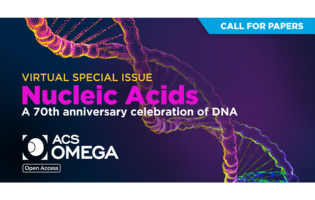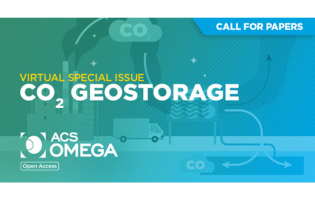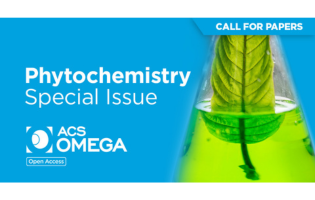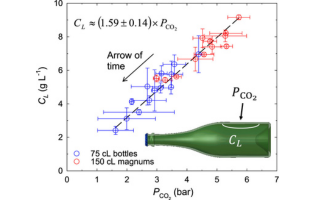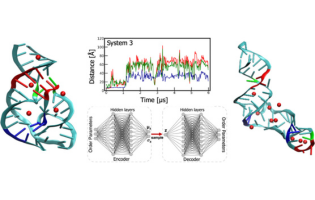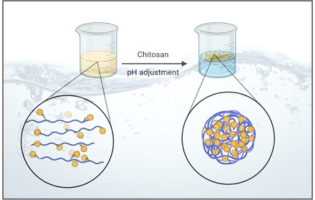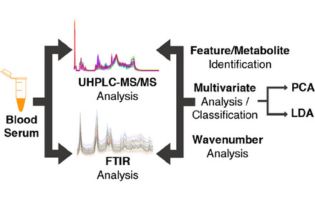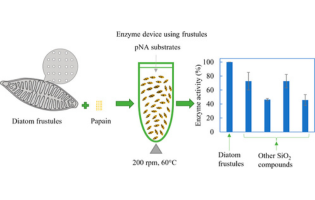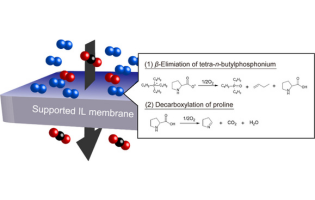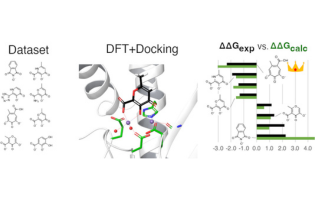What's New
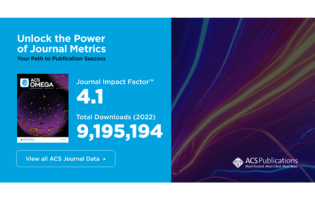
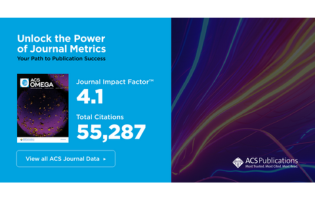
ACS Omega citation based performance metrics
The 2023 Journal Citation Reports (JCR), containing 2022 Journal Impact Factors and other citation-based performance metrics from Clarivate, was released on June 29, 2023.
We are delighted to say that ACS Omega has maintained its current impact factor of 4.1 (note as of this year, Clarivate is providing impact factors with only one decimal place). Our 5-year impact factor is 4, and our citations increased 33% from 2021 to 55,287 in 2022. Finally, our CiteScore released by Scopus – a four-year window of citations 2019-2022/four-year window for papers published 2019-2022 - increased from 5.2 to 5.9!
Editors: Prof. Krishna Ganesh and Dr. Muthiah (Mano) Manoharan
The year 2023 marks two important milestones in the field of nucleic acids research. It marks both the 101st anniversary of the birth of Har Gobind Khorana and the 70th year of the publication of the double-helical structure of Deoxyribose Nucleic Acid by James Watson and Francis Crick. This Call for Papers aims to provide a platform for the scientific community to present their high-quality research in nucleic acids, in celebration of this milestone anniversary.
Editors: Prof. Mohamed Mahmoud, Dr. Muhammad Arif, Dr. Yihuai Zhang
ACS Omega - In The News
I'll raise a toast to that! Scientists reveal how to keep your champagne bubbly for up to 132 YEARS – and it's surprisingly simple
Featured in the UK-based news outlet The Daily Mail, is an article from ACS Omega that explains why bubbles last longer when champagne is kept in a bigger bottle. In their new study published by ACS Omega, Gerard Liger-Belair and his team set out to find out how the size of the bottle influences how long the champagne remains bubbly.
The slow decrease of dissolved CO2 during prolonged aging of the most prestigious cuvees raises the issue of how long champagne can age before it becomes unable to form CO2 bubbles during tasting. A multivariable exponential decay-type model was proposed for the theoretical time-dependent concentration of dissolved CO2 and the subsequent CO2 pressure in the sealed bottles during champagne aging.
Reference: Gerard Liger-Belair et al., Losses of Yeast-Fermented Carbon Dioxide during Prolonged Champagne Aging: Yes, the Bottle Size Does Matter! ACS Omega 2023, 8, 25, 22844–22853, DOI: 10.1021/acsomega.3c01812
Key Journal Metrics
- ACS Omega published 367 articles in June 2023; as compared to the equivalent timeframe in 2022, this represents a 0.7% decrease in published output.
- Usage continues to grow - ACS Omega's articles recorded 1,106,443 downloads in June; this represents a 47.1% increase in usage compared to the equivalent time period in 2022.
Published Issues
Featured Articles
This article explores the role of magnesium ions (Mg2+) in stabilizing the tertiary structure of RNA molecules. Using computational modeling techniques, the study investigates the specific interactions between Mg2+ ions and the pseudoknot structure in the Twister ribozyme. The results suggest that Mg2+ ions play a crucial role in stabilizing the three-dimensional structure of RNA by facilitating specific interactions with phosphate groups and bases of neighboring nucleotides, while also observing new Mg2+ ion sites that contribute to stabilization and interactions that facilitate the folding process.
Mert Y. Sengul and Alexander D. MacKerell Jr.*, University of Maryland, United States
ACS Omega 2023, 8, 22, 19532–19546
This study explores the use of commercial chitosan, a natural polysaccharide derived from chitin, as a coagulation agent to remove vegetable oil emulsions from water. The research finds that chitosan is effective at low concentrations and can be reused, providing a cost-effective and sustainable solution for oil removal. The study highlights the potential of chitosan as a natural and eco-friendly alternative to conventional coagulants for addressing water pollution caused by oil contamination.
Leonardo Lamanna et al., University of Lecce, Italy
ACS Omega 2023, 8, 23, 20708–20713
This article examines two protocols for extracting the serum metabolome, one using methanol and the other a mixture of methanol, acetonitrile, and water. The metabolome was analyzed using ultraperformance liquid chromatography with tandem mass spectrometry (UPLC-MS/MS) and Fourier transform infrared (FTIR) spectroscopy. While the FTIR spectroscopy platform did not identify metabolites as effectively as UPLC-MS/MS, it proved useful for comparing extraction protocols and developing predictive models for patient survivability, offering a simpler, rapid, and cost-effective alternative for high-throughput analysis and biomarker discovery.
Cecília R. C. Calado et al., Instituto Politécnico de Lisboa, Portugal
ACS Omega 2023, 8, 23, 20755–20766
The article discusses the impact of nonuniform cosolvent ratios in liquid lithium-ion-battery electrolytes on cell voltage. Measurements reveal liquid-junction potentials when only the cosolvent ratio is polarized, and a transport model based on irreversible thermodynamics is proposed to explain the phenomenon. Junction coefficients of specific components are reported, highlighting the influence of ionic current on solvent migration.
Charles W. Monroe et al., University of Oxford, United Kingdom
ACS Omega 2023, 8, 23, 21133–21144
The article discusses the development of a "floatable" enzyme device using diatom frustules, a natural nanoporous biosilica, to enhance the mobility and activity of immobilized enzymes. The floatable frustule device demonstrated higher enzyme activity and improved reactions with substrates compared to other SiO2 materials commonly used for enzyme immobilization. The results suggest that the device's high floatability and large surface area contribute to maximizing enzyme activity by increasing the probability of substrate interaction.
Nay San Lin et al., Tokyo University of Science, Japan
ACS Omega 2023, 8, 23, 21145–21153
The article investigates the stability of amino acid ionic liquids (AAILs) and their potential for CO2 separation. The study finds that even though the AAIL undergoes oxidative degradation, the resulting degraded material can still be used to fabricate supported IL membranes that maintain their CO2 permeability and selectivity.
Yuki Kohno, Takashi Makino et al. National Institute of Advanced Industrial Science and Technology (AIST), Japan
ACS Omega 2023, 8, 23, 21154–21161
This article discusses the limited targeting of metalloenzymes by FDA-approved drugs despite their involvement in human diseases. The study applies density functional theory (DFT) to predict binding free energies and understand the structure-activity relationship of metalloenzyme inhibitors, providing a fast and predictive tool for designing new drugs to target these proteins.
Silvana Vasile and Katarina Roos, Uppsala University, Sweden
ACS Omega 2023, 8, 24, 21438–21449
Previous Newsletters
Click below to view a previous ACS Omega Monthly Update:
© 2025 American Chemical Society, 1155 16th St NW, Washington, DC 20036, USA. View our Privacy Policy



